The Carlo Zauli Museum in Faenza was among the institutions most affected by the flood that hit Romagna. It is located in the historic center of Faenza, in the premises that since 1949 belonged to Carlo Zauli, an important 20th-century sculptor whose history the museum promotes, always, however, attentive to studying and disseminating the languages of contemporary art. “The flood of May 18,” says Matteo Zauli, director of the museum, “devastated cellars, ground floor, and garden, all spaces used for exhibitions, events, and workshops. Numerous works from our collection were destroyed, and facilities and structures were damaged. Major specialized restoration work will be essential.” A fundraiser has been started on GoFundMe and it is possible to contribute by donating a free amount. In the days following the flood, several volunteers helped the Carlo Zauli Museum remove water and mud. Among the volunteers were some artists: they are the protagonists of the third installment of Diario Romagna.

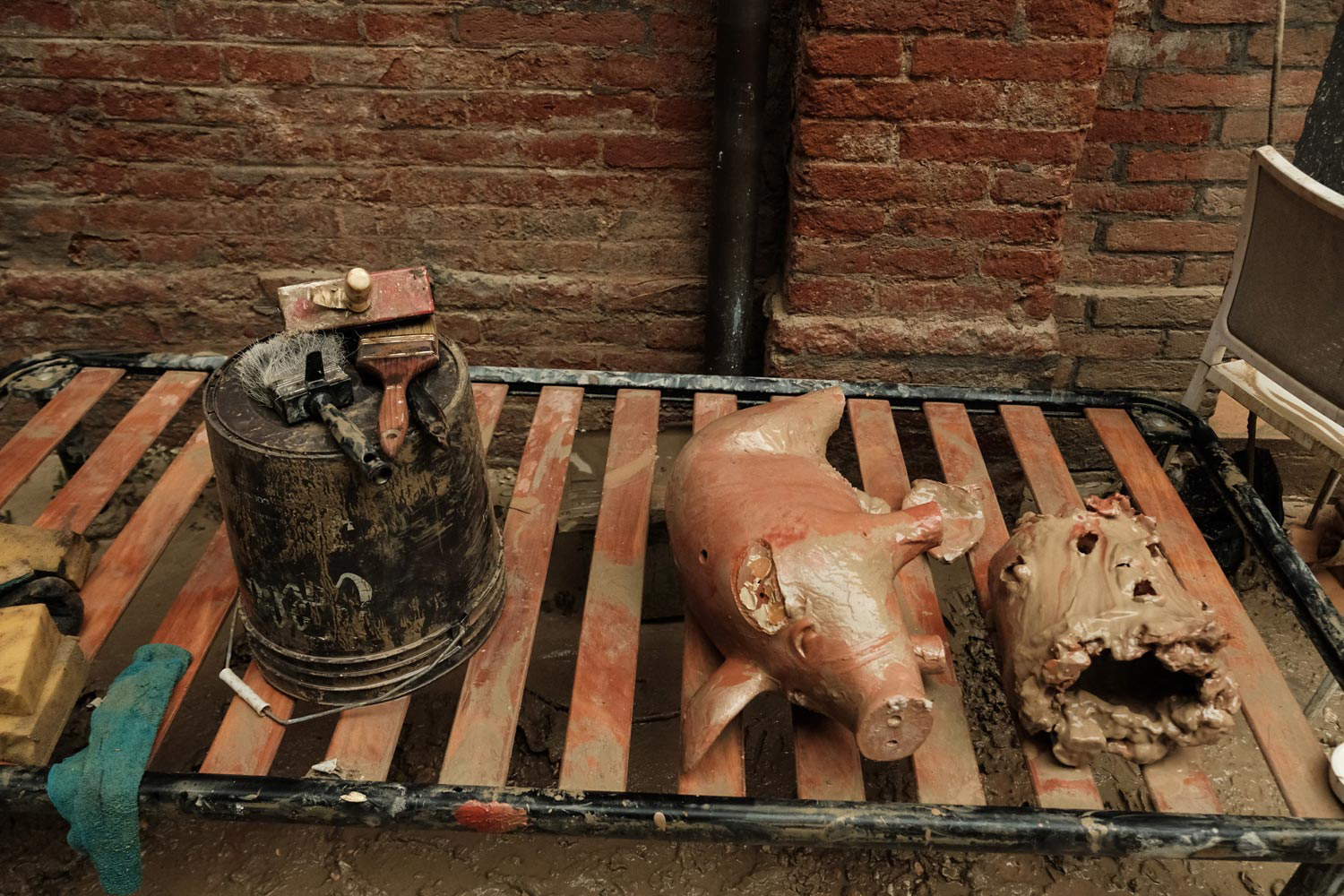

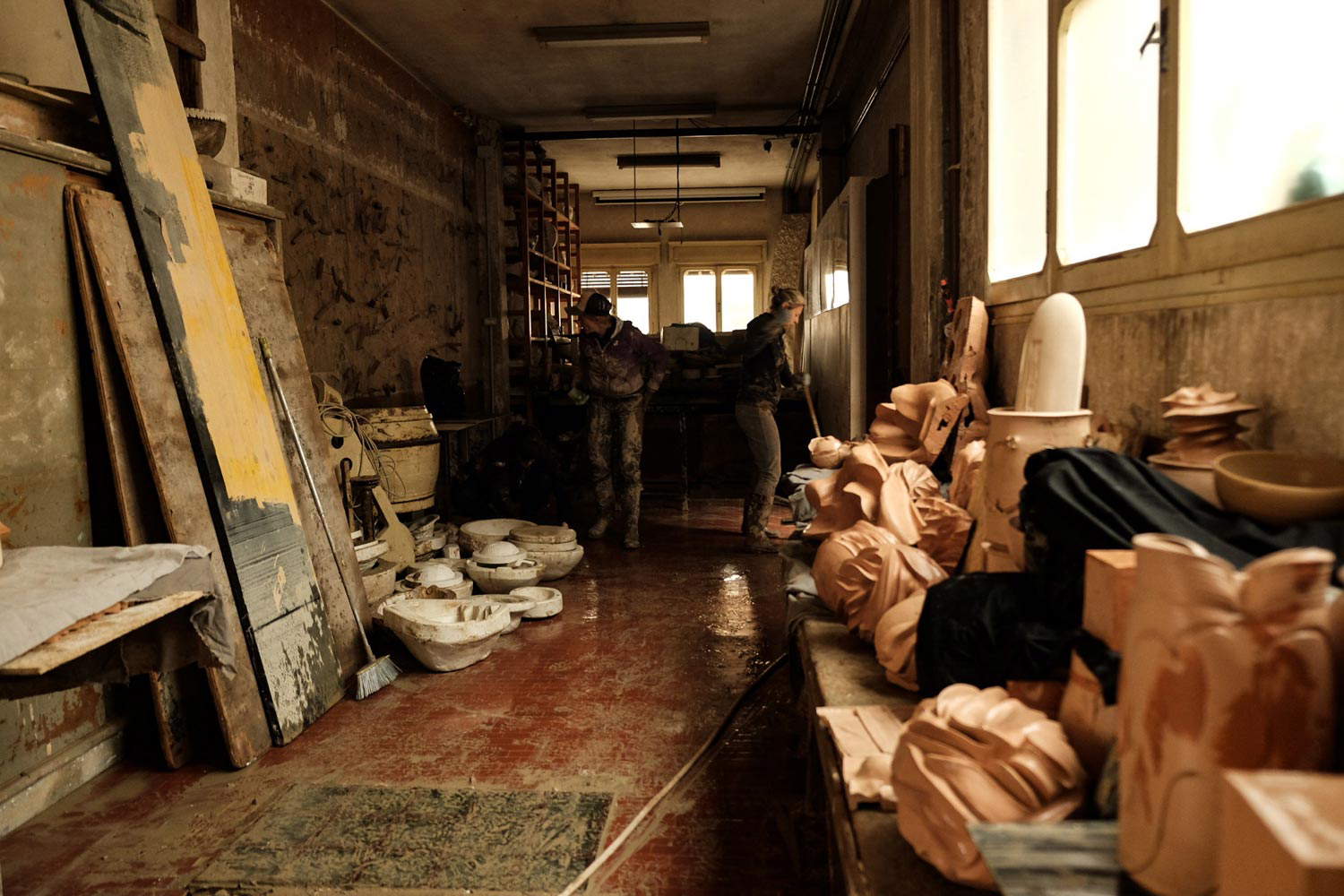

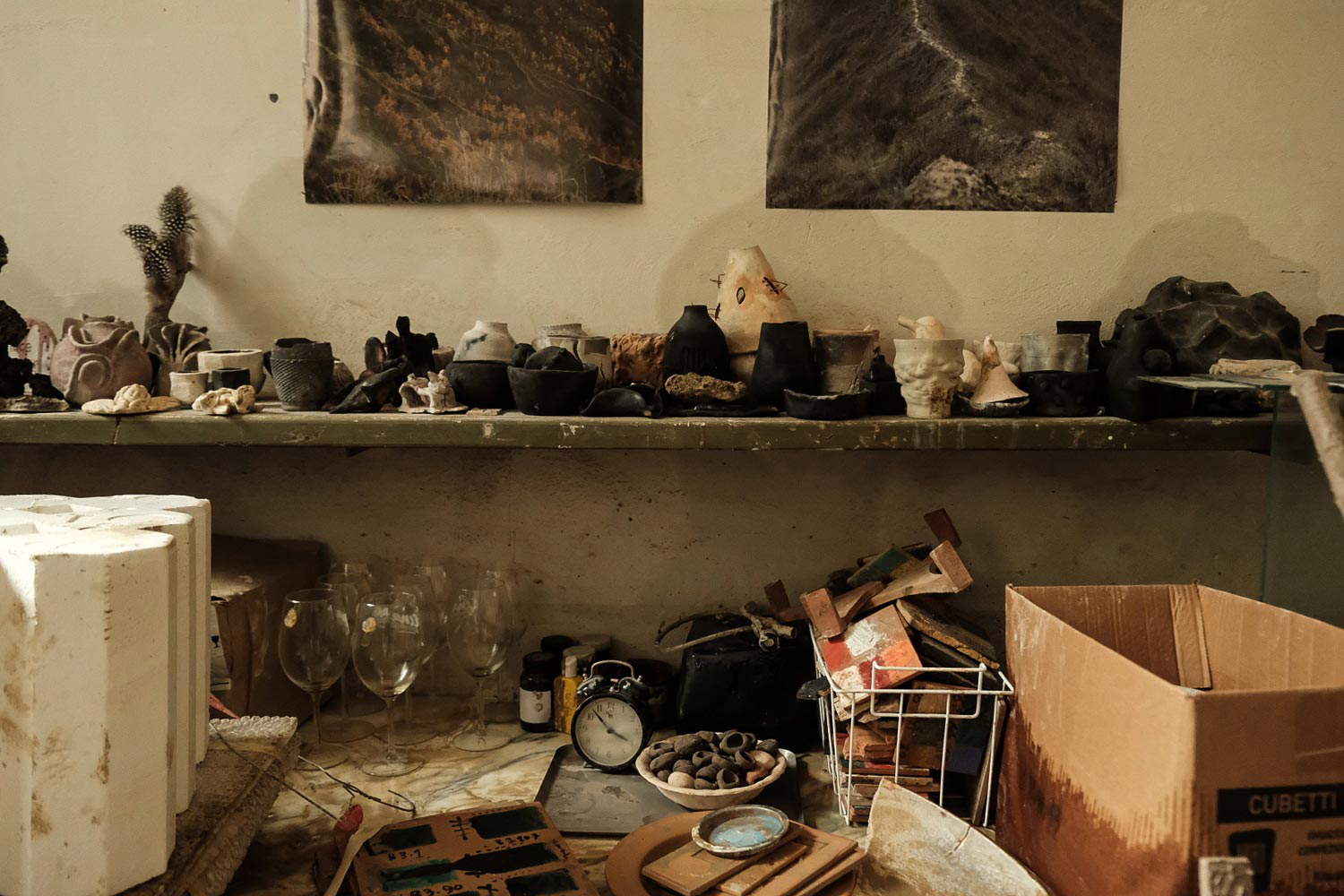




Of the arrival in the center of Faenza, I was particularly marked by the curtain of dust along the streets, which blurred the silhouettes of people and volunteers; the shovels carried on their shoulders sadly resembled bayonets. The Lamone, along the banks, showed everyone the furnishings of houses covered with motta, with a chilling detachment, an offense beyond human control.
At the Zauli Museum, works in the cellars and exhibition spaces on the ground floor were literally invaded or submerged by water and mud.
Earth to earth, in a sudden mantra, as if that same clay from which Carlo Zauli had created them wanted to take them back, in an act of bullying. A strong grip on the heart.
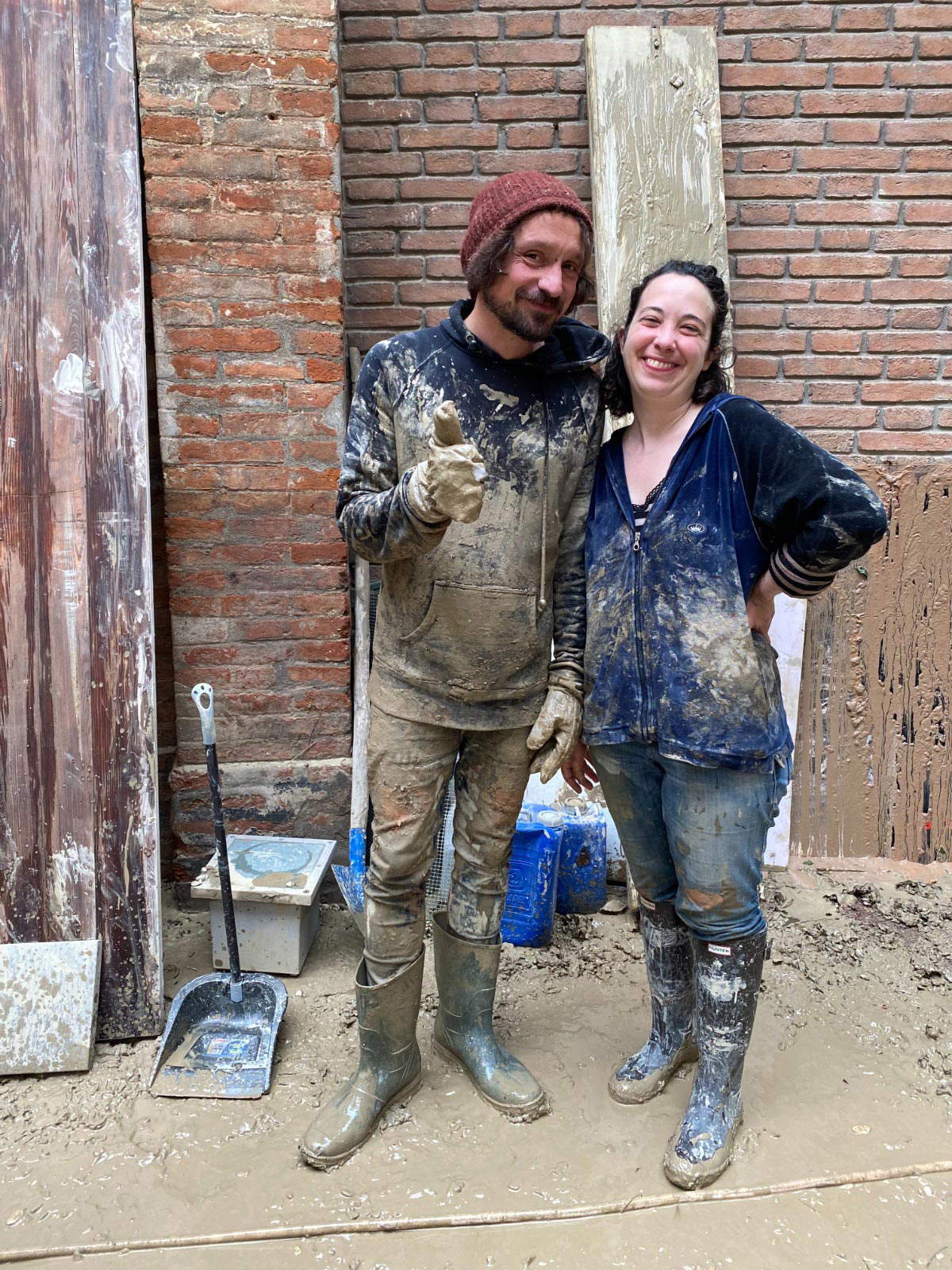
Five, ten, fifteen, I was counting the hours I spent at the Carlo Zauli Museum in the days after the flood.
They are not many in fact, to tell the truth, when compared to the endless days of the volunteers and volunteers engaged in relief activities, they are a nullity.
But thinking about the minutes - three hundred, six hundred, nine hundred - they begin to be something to me. One minute is enough to feel a sensation: bewilderment, disbelief, emotion, empathy, strength, irony.
Then come the seconds and those are many. For every second a thing to do, and as you bend, grasp, move, rub, memories come back, even those of so many years ago, of the four years we lived in that apartment that overlooks this very garden that has become a construction site for the recovery and cleaning of plaster from mud.
Tuuu-tuu-tuu... and meanwhile Matteo, never answering the phone.

Faenza May 27-28, June 1-2-3
station-museum-piazza-habitat-museum-station: these were my movements, on foot or by bike, during my stay in Faenza; my view is absolutely partial compared to what could have been the total state of the city.
At the Carlo Zauli Museum I saw activated precisely those processes that are dictated by the flood:
accumulation and overflow!
Accumulation was the mud that submerged the surfaces of the casts until the image they contained was obliterated; the amount of water that moved the sculptures and “settled” them in some areas of the museum; dozens and dozens of casts shattered and piled between wooden planks and girders bent by the weight of the mud; the cellars, after the water was removed, gave the feeling of standing in Santiago Sierra’s work, House in Mud, 2005 after a performance by Hermann Nitsch had taken place! Torn sacks of both black clay and red oxides had joined the mud poured everywhere on the walls and floor.
Overflowing was the enormous quantity of casts and plaster molds that volunteers, like a river in flood, poured from the cellars to the museum courtyard; overflowing was the lived experience in the museum that the hundreds of people from all parts of Italy took away with them!
Many days were devoted to the thorough cleaning of everything that had been poured into the museum courtyard to bring to light the history and memory that the casts and sculptures have long preserved.
Not everything was saved, but it is in the process of the life of things; sometimes some of it creates a layer of sediment, or it can become artifacts and discoveries.
The rock that arouses more study interest is the one that contains more veins given by the layering of various materials.
The museum is creating its own archive, a catalog of memory that was not there before: a step to start planning for the future again.

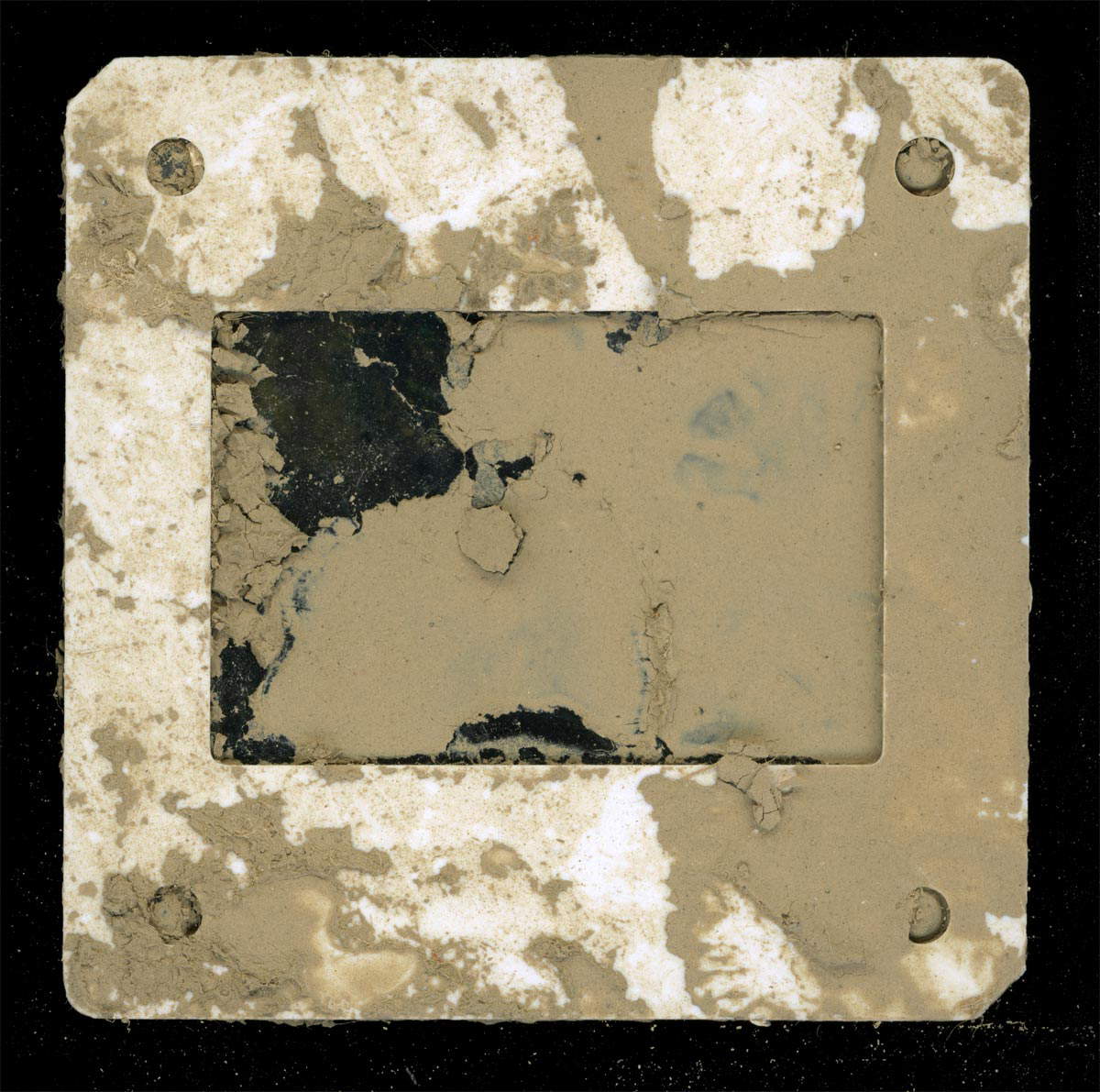 Michele Guido, Faenza 03.05.
Michele Guido, Faenza 03.05. Michele Guido, Faenza 03.05.
Michele Guido, Faenza 03.05.Over the course of my professional career, I have collaborated with many realities and institutions, but it is for the past three years that I have had the opportunity to open a sensitive and profound dialogue with the Zauli family, founders of the Carlo Zauli Museum in Faenza in the province of Ravenna, which was unfortunately severely affected by the flood on May 17. The collaboration with the Master’s children, particularly Matteo Zauli (Artistic Director) and Laura Zauli (Vice President) has meant that I have been able to express myself both as a visual artist and as an art therapist in an extremely sensitive and respectful context through the practice of both disciplines. In fact, since 2019, I have been leading the Carlo Zauli Arts Therapies Labs Project within the Museum’s Art Therapy Department in partnership with The New Arts Therapies School, Director Oliviero Rossi.
I now report the description of my testimony in relation to the terrible event.
A week after the first flood from which, however, the Museum emerged unharmed, a second more violent and destructive one followed, causing serious damage of which we are all aware. As soon as I was informed of the bad news, I tried to get in touch immediately with Laura and Matthew, making sure that they were all right physically but could only imagine their dismay and concern for everything else.
The very strong emotional dismay of the first moment and the following days, fortunately gave way to a constructive and courageous reaction not only in the Zauli family but also in all those people who huddled around it, including artists, volunteers and friends, promoting a deep and touching dimension of resilience.
As for me, perceiving myself as part of the working staff and moved by a sincere affection towards Matteo, Laura and Monica, I felt the need to make my small contribution with a concrete will to support them in any way I could also through my skills as an art therapist. I had the opportunity to reach the Museum to help out unfortunately only one afternoon, due to the dynamism of my work that leads me to travel so much.
Once I crossed the threshold, the Museum revealed itself as an open-air archaeological space where so many people were working hard to remedy, each one as he or she could, the disaster that the flood had left behind: there were those who, like me, in the garden were removing mud from plaster casts and sculptures, while those in the basement were busy sorting and decanting ancient soil into clean, dry bags.
Here, together with the many people I did not know and with whom I had the opportunity to exchange a few words and opinions, there was a feeling of compassionate solidarity, of Love, in its broadest meaning, in the air. This made me think that a hope-filled transformative force in opposition to the terrible and traumatic event had begun, thanks to everyone’s presence and participation.
Pleasantly amazed by the positive feelings of that afternoon and moved by the need to want to do more, I thought of organizing a few days of individual online art therapy sessions, the proceeds of which would be donated completely, as indeed happened, to the Zauli family, both for the restoration of the spaces and for the restoration/recovery of the damaged works.
The initiative was a great success, registering the highest number of bookings we could achieve; a sign that I think is extremely positive and suggests the natural need that human beings have to huddle around their fellow human beings in particular moments of difficulty in order to transform suffering into a shared experience and in so doing alleviate it.
The traumatic experience of the flood that deeply touched the Carlo Zauli Museum, the entire Faenza community and those in neighboring countries with heavy consequences, while it brought to light the many critical issues due in part to the lack of a stance taken by a certain political class, on the other hand, despite the complexity and tragic nature of the event, it brought back the attention of all of us to the importance of mutual support and solidarity. It was everyone’s small grand gestures offered with sensitivity and care that restored meaning and objectivity to the time we lived through. I believe that although the lifestyle we lead is focused solely on each person’s personal needs and ambitions, it is important to perceive ourselves as resourceful human beings belonging to a community where the meaning of the word “human” has to do, for me, with the dimension of heart, feeling and hope.
Two months have now passed since the ugly episode: restoration work has begun and it may take time to restore the Museum to its most shining form, but that does not detract from the fact that it proudly proceeds on a path of rebirth and profound flourishing.


Warning: the translation into English of the original Italian article was created using automatic tools. We undertake to review all articles, but we do not guarantee the total absence of inaccuracies in the translation due to the program. You can find the original by clicking on the ITA button. If you find any mistake,please contact us.